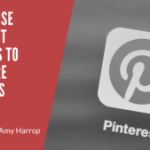How much are you charging for your printable products? I’m willing to bet that whatever your answer is, it’s not enough. While it might not take long to create printable products to sell, it’s important not to underestimate their value and what your customers will be willing to pay for them.
There’s an art to pricing any product. In this post, I’ll explain how to know whether your prices are too low, as well as how to set new prices that will help you increase your profits.
Are Your Prices Too Low?
We all learned about the law of supply and demand in school. It drives the marketplace for every commodity. The housing market is an example. When there are lots of homes for sale and few buyers, home prices tend to be lower than they would be with few homes listed and many potential buyers.
In general, there is a high demand for printable products. However, that can vary from niche to niche and product to product. A good way to tell how much supply there is for products like yours is to search Etsy using one of your keywords. The number of results that you get will tell you a lot about the supply and it’s also a good indication of demand. There wouldn’t be so many products in your niche if there weren’t a lot of demand for them.
Another way to figure out whether your prices are too low is to compare your prices to those of your competitors. In the world of printables, prices between $1 and $5 are common and many products are priced at $3.99. Of course, bundles are and should be priced higher than that.
The Psychology of Pricing
Let’s say you’ve been selling printables for $1.00 and you’re getting steady traffic to your shop and making regular sales. It’s important to understand the psychology of pricing before you decide on a new price for your products.
Let’s start with your psychology as a product creator and shop owner. You might be thinking that since you spent only a small amount of time creating a product, you shouldn’t charge much for it. That’s something I hear a lot. That’s the wrong mindset. Instead, you should be thinking about how much time it would take a customer to create that product or a similar one from scratch. You’re not just charging for the product. You’re charging for the knowledge and skill that allowed you to create it.
Now, as for the price itself, you’ll need to remember that the act of shopping online requires effort. People search, click links, compare products, get out their credit card, and enter the relevant information. They may not be willing to do it for one dollar, but they’ll do it for $3.99.
The other thing to remember is something called charm pricing. It’s the reason that so many prices end with 99 cents. People perceive prices to be lower if the left digit is reduced by one penny – particularly if that one-cent reduction also reduces the right digit. A reduction from $10 to $9.99 is perceived more favorably than a reduction from $3.60 to $3.59.
In other words, you should be thinking about the perceived value of your products and the psychology of pricing when you decide how much to charge.
Align Your Product Value with Price
People are willing to pay for things that provide value. That means that you’ll need to look at your audience and what they value before you decide on a price for any printable product. What are your customers paying for? Here are some examples.
- It’s far easier to buy a printable wedding planner than it is to make one from scratch. For people who have a printer, it may also be easier to print a planner at home than to go out and buy one – or wait for one to be shipped.
- In many cases, it may be possible to get a printable wedding planner for less than it would cost to buy a printed planner online or in a bookstore, particularly when you factor in gas, travel time, and shipping.
- Even when there are lots of printable wedding planners available, your design is unique to your shop.
- There’s plenty of evidence that bundled products have a higher perceived value than stand-alone products and it’s possible to charge more for them as a result.
- Profit-making potential. If you’re selling a template for customers to use commercially, you should charge more for it than you would for a one-time use product.
By focusing on what your audience sees as valuable, you can tweak your products and highlight the things that make them valuable to your customers.
How Much Should You Charge?
Deciding how much to charge for a printable product is as much an art as it is a science. Here are some things to remember.
- You don’t want to set prices that are out of line with what your competitors are charging. You might price yourself out of the market. That doesn’t mean you can’t charge a little more – we’ll talk about that in a minute.
- If you’re going to charge more, you must offer more. There’s nothing wrong with charging more than your competitors if you’re sure that prospective buyers will see more value in what you’re offering. For example, if you’re offering customizable files – or a bonus product with purchase – you can get away with charging a higher price.
- Make it convenient for people to buy from you. One way to do that is to offer bundles – for example, a printable wedding planner could be bundled with printable stickers and other related items. Remember what I said about online shopping being work? It takes longer to choose individual products than it does to buy a bundle.
- Think about how much you want to earn and work backwards. If you charge $1 for a product and sell 100, you’ll earn $100. By increasing the price to $3.99, you would earn nearly $100 with just 25 sales.
Keep in mind that you may need to do a bit of price testing before you arrive at the right price. If you increase your prices and your sales plummet, it’s a sign that your prices are too high.
Conclusion
Printable products offer convenience and value and it’s important to price them accordingly. Using the suggestions and tips here, you can be sure that you’re charging enough – and you’ll see an increase in profits.
Do you need some help getting your printables business off the ground? You can work directly with me to get the guidance you need. Click here to learn how!



